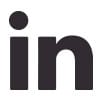As an executive assistant, your role is not only vital—it’s often the engine behind a leader’s success. Whether you’re supporting a CEO, a department head, or a busy entrepreneur, the demands are high, and the expectations are even higher. When jumping into a new position, it’s important to understand what sets the most effective EAs apart: a structured, proactive workflow that allows them to stay ahead of the curve.
If you’re looking to fine-tune your approach or better understand what’s expected of you, this guide will walk you through how to structure a workflow that’s not only efficient but also sustainable and strategic. Use these tips to become a very productive member of the team that’s valued for your efficiency and organization.
Prioritize Consistency and Reliability
The most successful executive assistants have one trait in common: they are rock-solid dependable. Consistency builds trust, and in your role, trust is everything. Being reliable doesn’t just mean showing up on time or getting tasks done—it’s about being predictably excellent in managing chaos, handling sensitive information, and supporting your executive without missing a beat. No two days in this type of role will look the same, but your work ethic and output should be consistent throughout the time in this role.
Establishing habits like always following up, hitting deadlines, and proactively communicating updates shows your executive that they can count on you, no matter what the day brings.
Know Your Core Responsibilities and Executive Assistant Duties
Before you can build an efficient workflow, it’s crucial to understand what’s expected of you. Executive assistant duties often extend far beyond scheduling meetings and answering calls. You might be asked to manage communications, prepare business reports, oversee project timelines, and handle travel logistics—all while anticipating needs that haven’t even been voiced yet.
Take time to clearly define and document your common tasks. Speak with your executive about their priorities, communication style, and expectations. Once you have this foundation, you can begin to streamline your workflow with clarity and purpose.
Begin with Your Executive’s Needs
Your number one job is to make your executive more effective. This means your workflow should be built from their goals and priorities, not just your task list. Ask yourself:
-
What are the biggest time-wasters for my executive? How can I combat these?
-
What do they struggle to stay on top of, and how can I be of help with these issues?
-
How can I reduce their cognitive load so they can focus on what is most important?
Understanding how your executive works and what they value most allows you to tailor your support to their needs. For instance, if they prefer written updates over in-person briefings, you can save both of you time by shifting how you deliver information. The way you handle daily processes can differ depending on the executive you support, and what they value the most as far as how you handle situations and keep them informed.
Organize Your Workflow by Time Frame
Breaking your responsibilities down by daily, weekly, and monthly workflows allows for smoother execution and fewer missed details. It also helps you batch similar tasks, reducing decision fatigue and allowing for more strategic time management. Having check-ins on your work load across various time periods allows you to make sure nothing falls between the cracks.
Daily Workflow
-
Review your executive’s schedule: Double-check for conflicts, prep relevant documents, and build in breaks or buffer time as needed.
-
Deliver a daily briefing: A short summary of the day’s meetings, priorities, and follow-ups can help your executive start strong.
-
Optimize their time: Look for opportunities to reduce unnecessary meetings, automate routine tasks, or reschedule low-priority events.
-
Manage urgent communications: Flag and respond to emails or messages that require immediate attention.
Weekly Workflow
-
Track meeting outcomes and action items: Summarize decisions, delegate follow-ups, and monitor progress on key tasks.
-
Audit executive communication: Are priorities being reinforced in internal and external messages? If not, make adjustments.
-
Follow up on open items: Check in with internal teams or external contacts to keep projects moving forward.
Monthly Workflow
-
Evaluate operational performance: Where are things running smoothly? Where are the bottlenecks?
-
Review goals and initiatives: Update progress against business goals and bring any roadblocks to your executive’s attention.
-
Adjust schedules and prepare reports: Realign calendars based on shifting priorities, and produce executive summaries or analysis for upcoming reviews.
Identify Repeatable Tasks to Improve Efficiency
Every executive assistant has tasks they handle repeatedly—whether it’s preparing board reports, planning travel, or coordinating recurring meetings. By identifying these repetitive tasks, you can explore ways to:
-
Automate steps using workflow tools
-
Create templates or checklists
-
Delegate smaller components to junior team members (if available)
-
Standardize documentation for faster completion
If you aren’t looking to improve repetitive tasks, then you will lose out on time savings that are worth while. This kind of proactive systems-thinking is what separates good EAs from great ones.
Leverage the Best Tools for the Job
Modern executive assistants rely on a suite of productivity tools to stay organized and responsive. If you’re not already using technology to your advantage, it’s time to level up. Here are the core categories where tools can make a big impact:
-
Calendar Management: Tools like Google Calendar or Outlook with integrations that support scheduling links, buffer times, and shared access.
-
Task Management: Try platforms like Asana, Todoist, or ClickUp to manage your personal to-dos and your executive’s action items.
-
Communication Tools: Slack, Microsoft Teams, or email filtering systems help you prioritize messages and reduce inbox clutter.
-
Document Management: Use Google Drive, Dropbox, or SharePoint for secure, organized access to shared files.
-
Travel Management: Platforms like TripIt or TravelPerk can simplify bookings and create consolidated itineraries.
The key is not just using tools—but using them consistently and intentionally.
Regularly Review and Refine Your Processes
Your workflow isn’t a one-and-done setup—it’s a living system. Set time aside each quarter to review how things are going. Are you constantly reacting to last-minute requests? Missing key updates? Feeling overwhelmed? How can you alter common processes to feel less overwhelmed and more on tip of your work?
Ask for feedback from your executive and be open to change. Small improvements—like blocking off time for admin work or using templates for common emails—can make a big difference in how efficient and effective you are.
Always Maintain Professional Discretion
It should go without saying, but in your role as an executive assistant, confidentiality is non-negotiable. You are often privy to sensitive business strategies, private conversations, and personal matters. Keeping this information secure and showing discretion builds trust—and protects both you and your executive.
Be mindful of where you store sensitive documents, who has access to your tools or devices, and how you discuss your work, even casually. Your ability to be a trusted gatekeeper is part of what makes you indispensable.
Ready for a Change? Let’s Talk
Whether you’re a seasoned executive assistant looking to grow into a more strategic role or someone exploring new opportunities, Professional Alternatives is here to help. We specialize in connecting high-performing professionals with top employers who value what executive assistants bring to the table. Check out our currently open roles or submit your resume to be automatically considered for roles that meet your skillset and career goals.
If you’re looking to transition careers or take the next step in your job search, connect with one of our expert recruiters today. We’ll help you find roles that align with your skills, goals, and values—so you can focus on doing what you do best: helping leaders succeed.
![]() Founded in 1998, Professional Alternatives is an award-winning recruiting and staffing agency that leverage technology and experience to deliver top talent. Our team of experienced staffing agency experts is here to serve as your hiring partner. Contact us today to get started!
Founded in 1998, Professional Alternatives is an award-winning recruiting and staffing agency that leverage technology and experience to deliver top talent. Our team of experienced staffing agency experts is here to serve as your hiring partner. Contact us today to get started!
We're proud to serve the following locations:
Houston / Spring / Katy / The Woodlands / Humble / League City / Sugar Land / Irving / Dallas / Richardson / Lewisville / Plano / Arlington / Austin / San Antonio / Waco / El Paso / Fort Worth / Chicago / Seattle / Los Angeles / San Francisco / Tampa / Charlotte / Nashville / Washington DC / Boston / Philadelphia / New Orleans / Oklahoma City
Recent News & Insights
Success with Your Recruitment Partner: What to Expect and What to Ask
When you’re ready to expand your team or fill a critical position, partnering with a recruiting firm can…
(Read More)How to Reach Out After an Interview Without Sounding Desperate
You’ve just wrapped up an interview, and things felt promising. You connected with the interviewer, answered questions confidently,…
(Read More)Manager’s Guide to Cybersecurity & Safer Work Practices
Cybersecurity begins with leadership, and managers play a defining role in shaping how teams protect data and respond…
(Read More)







